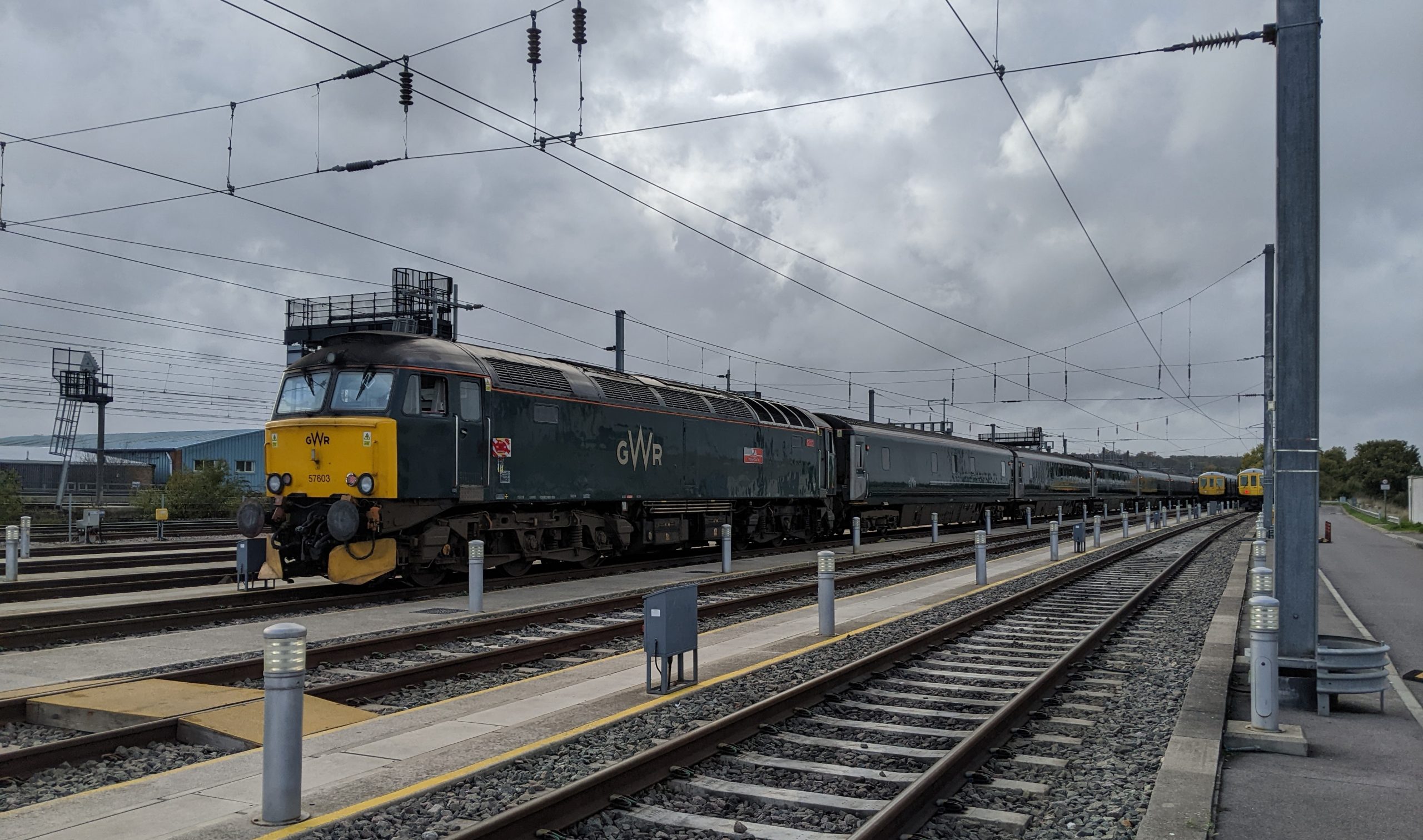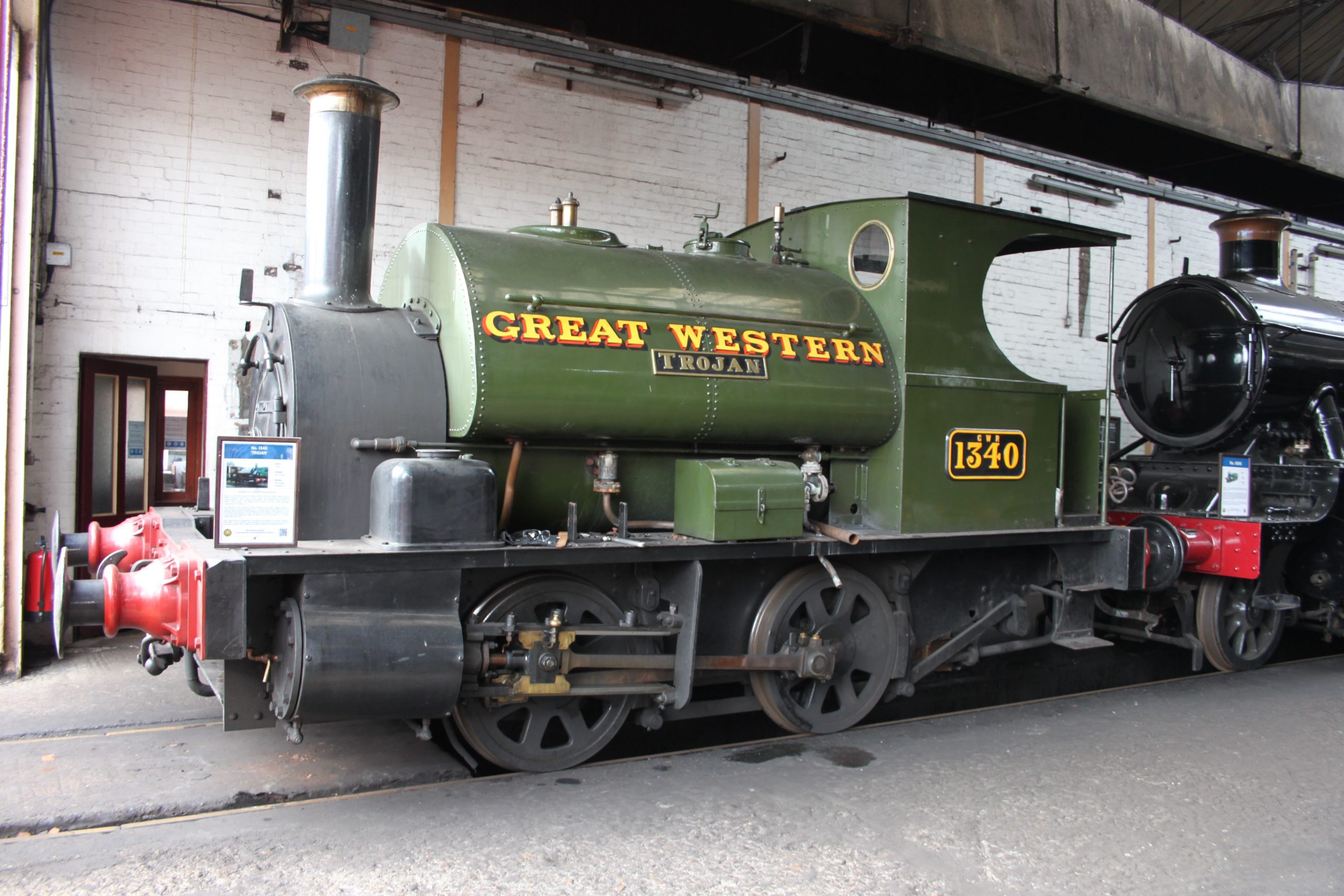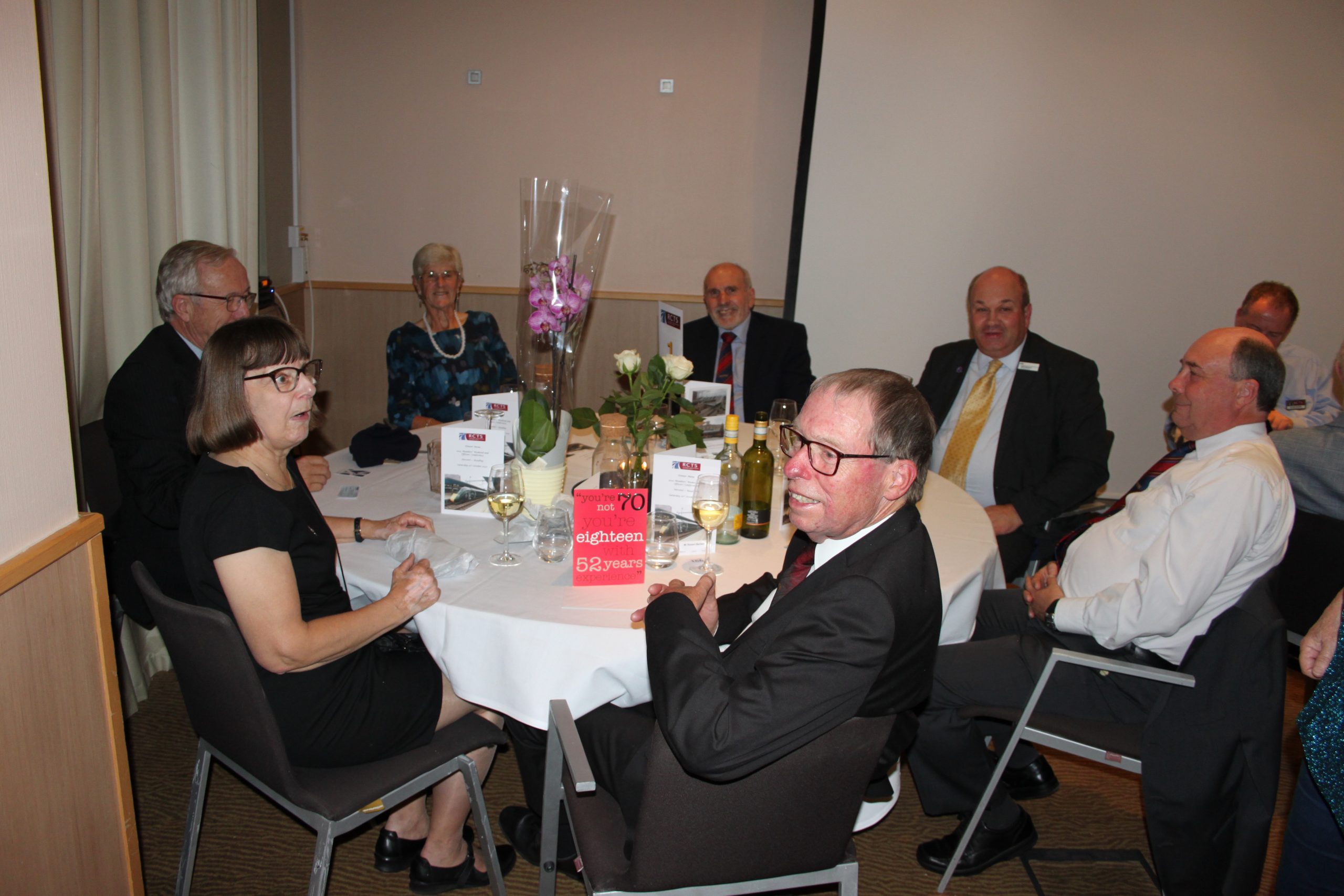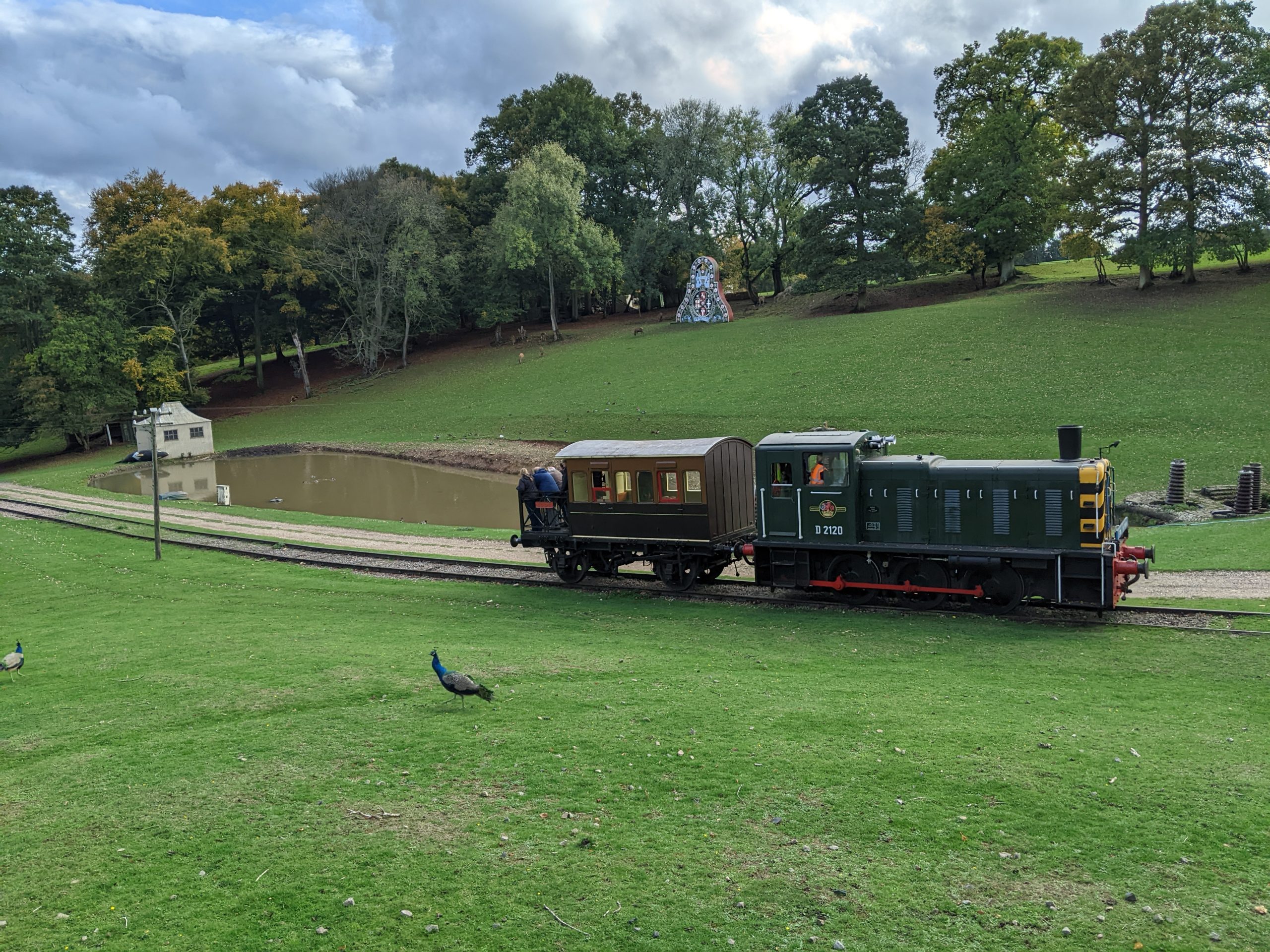Members’ Weekend 2022 report
This year's Members' Weekend (and Officers' Conference) was based at the Novotel in Reading, 21st-23rd October. We're pleased to present several visit reports and a selection of photographs taken by members.
Reading depot visit - Friday afternoon
By Stuart Hicks

This visit was part of the RCTS members’ weekend held in Reading and which included visit to Fawley Hill (separate report), Reading driver training simulator and Didcot GWS (which I did not visit having had some excellent Thames Valley branch visits there in recent years, although I understand that all had an excellent time with some helpful and informative guides showing them the whole site). This is an unofficial report.
An enjoyable and informative hour and a bit was spent on our visit at 1400 (a further visit took place later). Twelve RCTS members and four staff which was a generous commitment by GWR but no doubt partly impacted by safety requirements. Our visits started with a brief safety briefing, and we were provided with GWR orange vests but being a simplified visit restricted to safe walking routes we neither needed (nor got) hard hats nor safety boots. Our walk took us along the footpath by the roadway almost to the western end of the site.
As you probably know the site is only six tracks wide, being built on old railway line top replace the triangle depot used until just before electrification. A noise abatement order prevents diesel units from being stabled at the eastern end of the site which is therefore effectively used only by class 387 emus. The site overlooks fields used for the festival in the summer, but which looked peaceful and tidy on Friday. The depot was officially opened on 18 July 2013 by the then Secretary of State for Transport, Patrick McLoughlin and won a Exemplar Silver Wrench Award in 2015.
The main depot contains road number 1, nearest the main line, where most units go initially when they enter the depot for refuelling (if necessary) and tanking and emptying CET tanks. Roads 2 and 3 are used for overhauls, with 3 used for more significant work. The main shed takes 8 cars comfortably and can squeeze more in. Behind it and built later is a wheel lathe which can turn wheels on emus, dmus and sleeper cars and locos. We were able to go into the empty wheel lathe as we walked back from the west end, and also peer into the main shed. There are two small Zephir shunters on the depot to move stock around and one was inside the wheel lathe shed, the only part not wired.
Further west along the site is a cleaning plant, entered from the east, and then an underframe cleaning plant. It appears that the HEx dedicated units get particularly dirty, owing perhaps to materials in the airport tunnels. We saw the most recent addition to the class 57 portfolio, blue 57305 which can also be used for rescuing failed emus and dmus. Several class 387s were on site, along with 57603 Tintagel Castle and 57065 Totnes Castle with their new nameplates and a Night Riviera sleeper rake and some class 769s (the latter were described as a good unit) including 769930/38. I was told that three class 387s would be leaving for GN in December, but they would not be drawn on class 379. Barrier vehicles 6336/48 were parked behind the main shed and may have not moved for months.
The depot points are all controlled from a central panel in the depot, with movements all controlled by shunt signals around the site. We had hoped to see that but the delay in starting the tour whilst waiting for a couple of people from the driver training simulator meant that we started lightly late. Derailleurs protect the entrances to the shed, to protect people working inside, whilst the wheel lathe is protected differently.
Didcot (Great Western Society) - Saturday
By Richard Morris & Irene Rabbitts

Saturday’s visit was to the Great Western Society at Didcot. As the main rail stations at both Reading and Didcot were within a few minutes of the hotel and site respectively – we travelled there by train, Most folks boarded the 09:53 Great Western all stations service formed by 387170. At Didcot we were welcomed by Mike, Martin and Drew who split the group up and took them on a guided tour of the entire site, including some areas off limits to the public.
The running shed was open and some of the non-running exhibits were parked outside as the weather was reasonable. Drew’s pet project was the restoration of Collett 4-6-0 Castle Class 4079 Pendennis Castle, so people spent a bit of time looking at that locomotive. The restoration has taken the best part of 20 years to complete after the locomotive was repatriated from Western Australia. In the tool shop we were shown lathes, presses, and other pieces of large machinery, some of which was original and came from Swindon Works. In the main workshop, the new build project Hawksworth 4-6-0 County 1014 is well under way, Collett 2-8-2T 7202 is making good progress.
Other projects are a way off completion yet. In the carriage sheds, auto trailers W196W (in GW chocolate and cream) and W231 (in BR carmine and cream) were front and centre of the shed. In the vintage carriage shed next door former Ocean Liner saloon 9008, which had been adapted for use as a high level WWII military command centre, was on display along with an original GWR ‘family coach’, which could be hired to be added to a train for a larger family group.
Non-loco plans include concrete plans to make the site more accessible for all by installing a ramp to replace the current stairs. They have also acquired an additional parcel of land at the far end of the site to allow for some expansion although final decisions on how it is to be used have not been confirmed. They are also building or rather rebuilding Oxford Road Station with the new reinforced concrete foundations just laid which will finally enable them to have a proper station building where they will be able to provide much better facilities in that part of the site.
Down in the broad gauge station Fire Fly and Iron Duke were observing the comings and goings. Near the turntable Collett 2-8-0T 5227 is being dismantled to provide items for a couple of the ‘new build’ projects. Gas turbine 18000 ‘Kerosene Castle’ was looking forlorn – its future is uncertain. The Branch Line train was formed of ‘teddy bear’ Cl.14 D9516 (Swindon built in 1964) push/pull working with auto trailer 92, and over on the Demonstration Line, Collett small Prairie 2-6-2T 4144 was working with two carriages.
A lovely sandwich lunch was provided by the team at Didcot and, after the guided tours we were free to wander round the site, but not before the team brought 4144 down to the turntable and gave her a spin – 360 degrees, turntable is manually operated! A comment overheard “It is quite a compact site, but it is very easy to spend all day here.”
Gala Dinner - Saturday

Dinner was held at the Novotel, with Mr Mark Hopwood, Managing Director of GWR, our guest speaker. Mark is a local man (from Marlow) and he spoke as a rail-man and as a railfan.
The financial challenges facing the railway, the changing mix of business versus leisure travel, and development of the brand were some of the topics covered. Questions from the audience were answered with aplomb.
Fawley Hill - Sunday
By Stuart Hicks

This visit was part of the RCTS members’ weekend held in Reading and which included visit to Reading Depot (separate report), driver training simulator and Didcot GWS (which I did not visit having had some excellent Thames Valley branch visits there in recent years, although I understand that all had an excellent time with some helpful and informative guides showing them the whole site). This is an unofficial report as I understand Nigel Farebrother (copied) has been asked to write an official one.
Our party of c 55 people met outside the Novotel in central Reading and boarded our Horseman coach (KH72 HOR) which was taking almost everyone (a few drove themselves) to Fawley Hill a couple of miles outside Henley on Thames and up some narrow single lane carriageway roads. Unfortunately, the weather on Sunday was not the kindest with showers some heavy) and occasional thunder during the morning and soon after our visit, but fortunately the weather whilst we there had turned favourable. The Horseman coach was a 72-seater 2+3 seating vehicle used on school services, so the seats were not that wide. Nevertheless, it only took around 40 minutes to get there, despite going via the A4 and Twyford, so soon after 1 o’clock we were at the museum and starting on our packed lunches. Our train for the day was being prepared - D2120 and a covered vehicle purporting to be L&Y375 but shall we say substantially rebuilt and modified with a balcony at one end. On normal public (“by invitation”) opening days two wagons are used, one often being an open wagon, and usually with their steam locomotive (Hudswell Clarke 0-6-0ST number 31) so the class 03 was a new for me for haulage.
The train made five return trips to the bottom of the hill and along to the west, not using the loop line (which was chocked) or reaching that close to the ends of the line. The loco has no Deadman’s handle so two drivers are required to be in the cab, but our lady driver was performing well. I was fortunate with another member to be able to have a cab ride on the last run. Speed is kept to 5 mph running downhill using both train vacuum brake and loco air brake. The train saw some interference from the deer in the paddock who have a habit of lying down on the (warm) sleepers and being very unwilling to move, although hand clapping helps to dissuade them from remaining prostrate.
There are three bogie coaches on the site, ex royal saloon 2900, 99064 and 99050. The museum and station area, and indeed the rest of the site still have the large collection of railway memorabilia acquired (somewhat haphazardly it would appear) by the late Sir William. One hopes that it will still be safe after Lady McAlpine passes away.
Photo albums
Click the thumbnails to open each album
Andy Davies was official photographer at the Saturday dinner and one of the organisers of the whole weekend. He provides a large number of images covering most of the activities. Tom Kolisch and Irene Rabbitts are pictured here.
Our chairman Callum MacLeod shares images from Didcot and Fawley. Some are stills taken from video, and several are of non-railway artefacts in the Fawley museum.
John Ross provides a small collection of very crisp photos covering the whole weekend. Eric Willis pictured left.
Richard Neale captures more of the flavour of members taking part. It includes the one-and-only image of the Officers' Conference on the Sunday morning. Malcolm Hammond pictured centre.
Attendees
[G] = Guest
| Mr Gordon Adams |
| Rev'd Canon Brian Arman |
| Mr John Armitage |
| Mrs Christine Bartlett [G] |
| Mr Frank Bartlett |
| Mr Robert Bartlett |
| Mrs Ann Baverstock [G] |
| Mr David Baverstock |
| Mr Charles Bicheno |
| Mrs Charmaine Bourton [G] |
| Mr Robert Bourton |
| Mr Peter Brown |
| Mr Jim Bryant |
| Mrs Rosemary Buchan |
| Mr Peter Burridge |
| Mr Robert Burridge |
| Mr William Collett |
| Mr Colin Conway |
| Mr Alan Cooke |
| Mrs Vron Cooke |
| Mr Phil Darlaston |
| Mr Andy Davies |
| Mr Nigel Farebrother |
| Mrs Diane Gibson [G] |
| Mr Peter Gibson |
| Ms Beatrice Goddard |
| Mr David Goddard |
| Mrs Sally Goddard |
| Ms Bethan Griffiths [G] |
| Mr Malcolm Hammond |
| Mr Jeremy Harrison |
| Mr Stuart Hicks |
| Mrs Alison Holloway [G] |
| Mr John Holloway |
| Mr Denis Horsman |
| Mr Tony Horstmann |
| Mr David Jacobs |
| Mr John Jenkins |
| Mr Hefin Jones |
| Mr Peter King |
| Mr Tom Kolisch |
| Mrs Carol Lacey [G] |
| Dr Steve Lacey |
| Mr Callum MacLeod |
| Mr James Milne |
| Mr Andrew Morris |
| Mr Richard Morris |
| Mr Richard Neale |
| Mr Steve Ollive |
| Mr George Palin |
| Mrs Jean Palin [G] |
| Mr John Priestley |
| Mr Colin Prosser |
| Mrs Irene Rabbitts |
| Mr John Redgate |
| Mr Mark Richards |
| Mr Timothy Roe |
| Mr John Ross |
| Mr Roger Sandford |
| Ms Helen Schofield [G] |
| Mr Alan Shave |
| Mr Matthew Shaw |
| Mr John Quentin Smith |
| Mr David Stuart |
| Mr Paul Teesdale |
| Mr Arthur Turner |
| Mr David Tyreman |
| Mr Richard Warren [G] |
| Mrs Carole Willis [G] |
| Mr Eric Willis |
| Dr Peter Wrighton |





